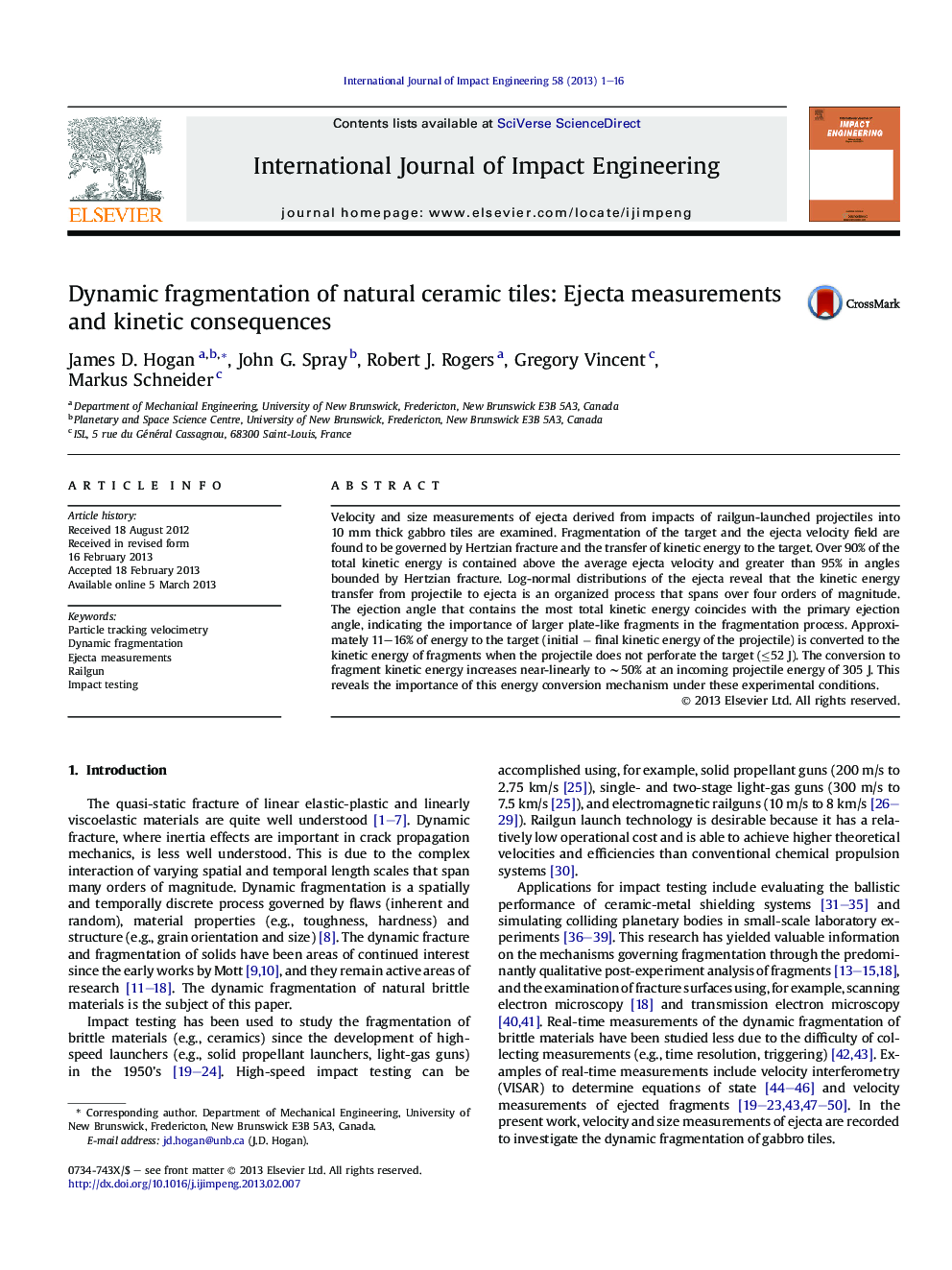| Article ID | Journal | Published Year | Pages | File Type |
|---|---|---|---|---|
| 776631 | International Journal of Impact Engineering | 2013 | 16 Pages |
Velocity and size measurements of ejecta derived from impacts of railgun-launched projectiles into 10 mm thick gabbro tiles are examined. Fragmentation of the target and the ejecta velocity field are found to be governed by Hertzian fracture and the transfer of kinetic energy to the target. Over 90% of the total kinetic energy is contained above the average ejecta velocity and greater than 95% in angles bounded by Hertzian fracture. Log-normal distributions of the ejecta reveal that the kinetic energy transfer from projectile to ejecta is an organized process that spans over four orders of magnitude. The ejection angle that contains the most total kinetic energy coincides with the primary ejection angle, indicating the importance of larger plate-like fragments in the fragmentation process. Approximately 11–16% of energy to the target (initial − final kinetic energy of the projectile) is converted to the kinetic energy of fragments when the projectile does not perforate the target (≤52 J). The conversion to fragment kinetic energy increases near-linearly to ∼50% at an incoming projectile energy of 305 J. This reveals the importance of this energy conversion mechanism under these experimental conditions.
► The dynamic fragmentation of natural ceramic tiles is examined. ► Hertzian fracture contains >95% of total ejecta KE. ► Spalled fragments contain >70% of total ejecta KE. ► 15% of energy to the target is converted to ejecta kinetic energy for low loadings. ► This increases to 50% for higher loads; thus highlighting its importance.
